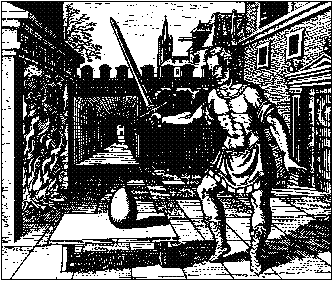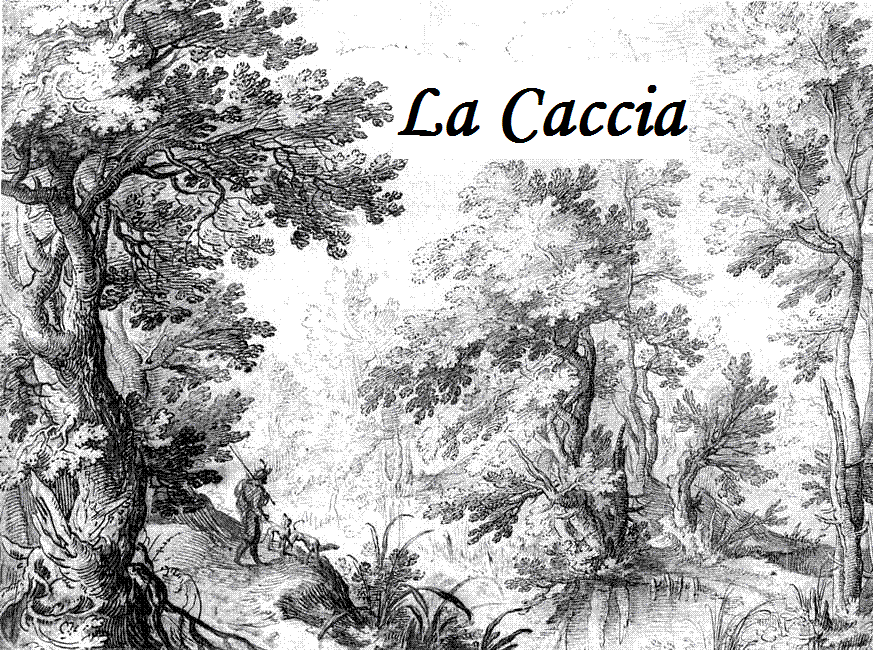Canons, Fantasias, Fugues, and Other Musical ChasesAn exploration on recorders of all kinds of imitative polyphony from the Middle Ages and Renaissance, including 14th-century Italian caccias and madrigals, 15th-century instrumental consort music, 16th-century fantasias, and Jacobean fuguesThe Quilisma ConsortMelika M. Fitzhugh, Lisa Gay, and Carolyn Jean Smith, Sunday, November 5, 2006, 3 PM
| |
| I. The Trecento | |
| Faccia chi de', s'èl po' che passa l'ora | Donato da Firenze (fl. 1370-75) |
| Dappoi che'l sole | Niccolò Perugia (fl. 1350-1400) |
| In forma quasi tra'l veghiar e'l sonno | Vincenzo da Rimini (14th Century) |
| Or qua, compagni | Anonymous (14th Century) |
| Tu, che ll'oper' altrui vuo' guidichare | Francesco Landini (1325/35-1397) |
| Con lagreme bagnandome | Johanes Ciconia (1335-1411) |
| Aler m'en veus | Ciconia |
| Venecie, mundi splendor | Ciconia |
| Quod jactatur | Ciconia |
| Le ray au solely | attr. Ciconia |
| II. The Renaissance | |
| Fantasia | Giovanni Coperario (ca. 1570-1626) |
| Browning | Elway Bevin (1554-1638) |
| Fantasia | Thomas Lupo (1571-1627) |
| Fantasia | Lupo |
| Fantasia and Echo | Jacob van Eyck (ca. 1590-1657) |
| Four Fugues from Atalanta Fugiens | Michael Maier (1568-1622) |
| Non hominum foret in mundo | |
| Embryo ventosa Boreae | |
| Abdita quisquis amas scrutari dogmata | |
| Romulus hirta lupae pressisse | |
| Helas que pourra devenir | Heinrich Isaac (ca. 1445-1517) |
| La stangetta | attr. Jacob Obrecht (ca. 1450-1505) |
| Ma bouche rit | Jean de Ockeghem (ca. 1425-1497) |
| Five pieces from Bicinien | Orlando di Lasso (1532-1594) |
| Venis regrets | Loyset Compè (ca. 1450-1518) |
| Cela sans plus | Josquin des Prez (ca. 1440-1521) |
La caccia means hunt or pursuit. It is the ancestor of the English words "chase" (via French) and "catch" (via Italian), and in all of these languages, the words apply both to literal hunting and to musical forms. Musically, a chase involves a particular kind of repetition: one part states a theme, and one or more other parts "chase" after by repeating it. The kind of chase most familiar to us today is the round. Today we will be exploring chases from the late 14th Century to the early 17th Century.
The first half of our program features the music of 14th Century Italy, an era known as the Trecento. At this time, Italy experienced a flourishing of artistic creativity that presaged the Renaissance to come a century later. Composers combined the oral tradition of Italian secular music with the poetic forms of the 13th Century French troubadours and the ornate rhythms of the new French style, the Ars Nova. Typically, Trecento music featured a fairly simple lower voice with one or two upper voices that intertwined above it in highly complex and virtuosic melodies. In one form, the caccia, the two upper voices are in canon: they sing the same music, but one starts much later than the other. The first four pieces in our program are cacce.
Perfect canons are only one kind of musical chase. Imitation -- brief moments of one voice echoing another -- features in many compositional styles. Trecento madrigals, ballata, virelai, and motets use such musical "echoes" to give some structure to their free-flowing melodies.
This kind of imitation became a staple of Renaissance compositions, especially the fantasia. Influenced by improvisational music, fantasias have little formal structure, and often what holds the pieces together coherently is the repetition of motives across all the voices. Sometimes the interval between repetitions is as long as a phrase; other times the interval is as short as a single quick note. Likewise, the length of the repeated motive can vary.
The second half of our program is mostly a collection of fantasias, beginning with early 17th Century works from England and Holland. The German fugues of Michael Maier are canonic settings of texts that explain alchemical processes in symbolic code. (See the back of the program for an example from Maier's book.) The remaining pieces are by a collection of composers who, like Johanes Ciconia a century earlier, trained in Flanders and served as a court musician in the most fashionable courts of Italy during the height of the Renaissance.
We hope you enjoy listening for the chasing voices in this music!
An image from Michael Maier's Atalanta Fugiens:

"Take an Egg and smite it with a Firey sword"
The Quilisma Consort has been exploring the beautiful music of the Middle Ages and Renaissance since 2004.
Melika M. Fitzhugh is a long-standing member of the world music ensemble Urban Myth where she plays many instruments including violin, bass, and percussion. She came to the Quilisma Consort to focus on early music. She has a degree in music composition from Harvard University.
Lisa Gay founded the Quilisma Consort in 2004 to satisfy her addiction to early music. An avid recorder player and fan of Orlando de Lasso since childhood, she has performed in The Christmas Revels in Cambridge and Chicago, and with ensembles such as Calliope, The Masqued Phoenix Consort, and Ars et Amici. She studies recorder with John Tyson.
Carolyn Jean Smith received an MA in Early Music from the Longy School. She has performed with Stämbandet, Serendipity and Cantata á Trois and has studied with Ford Weisberg, Sonja Lindblad, and John Tyson. She has performed in several venues, including the Society for Historically Informed Performance Concert Series, and can be heard on Nordic Voices, a CD by Stämbandet under the Nordic Sounds label.
We would like to thank the Boston Recorder Society for their support,
along with John Tyson and Frank Jones for encouragement and instrument loans.
